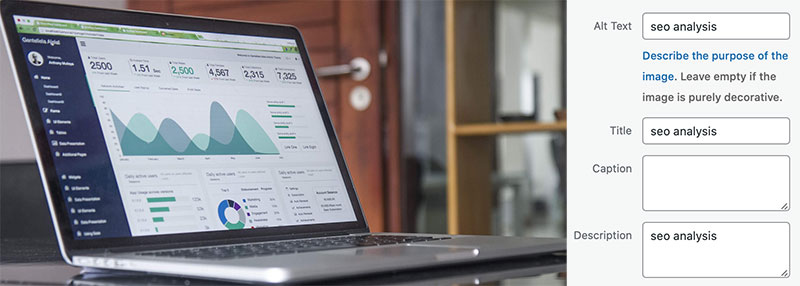Your blog or news articles are a key part of a great digital marketing strategy.
Compelling blog posts follow search engine optimisation (SEO) guidelines. These include titles and sub-headings with your key phrase, a good keyword/phrase ratio, and using targeted keywords in the first paragraph. Linking to at least three other pages on your website and an external source affects your SEO score. Using an SEO analysis tool like Yoast SEO can help you get it right before publishing.
We use Yoast on every site we build, and you can also use it to create compelling blog posts.
A green bullet will show you that you are right on target.
An orange bullet will offer you some suggestions on how to improve your content.
A red bullet means you have work to do to align your content with best practices.
#1
Blog length
The longer, the better for social shares; having said that, quality is critical.
Below is a list of blog post lengths and their purposes.
300 to 750-word blogs. This is the standard blogging length that many bloggers recommend. For professional journalists, especially newspapers, the standard length is 750 words.
1000 to 1500-word blogs. This length of blog post tends to get more shares on social media. However, according to HubSpot, the highest-ranking articles on Google are around 2300 words. If you want to rank well on search engines, this is the best length of blog post to write; you are considered an expert. According to a 2017 study by Orbit media, the average blog word count is 1142.
#2
Keyword topics
Each post you write should contain a specific keyword or keyphrase. This means a topic that people search for a lot on Google. Having said that, you should not choose a phrase that loads of other posts or sites compete for to provide answers. In a 500-word blog post, you should include your keyword phrase in your title and at least three times in the copy. Do not use it more than seven times, or search engines will see it as stuffing.
#3
Well-named images or graphics
Search engines aren’t able to read images. Alternative text (alt-text) is how we tell a search engine what the image is about. You should add good alt text to all images using keywords relevant to your blog. When uploading for the web, the image name should be the same as the alt text.
Including images in your blog posts breaks up the text. This makes your pages more visually appealing. Google measures the time visitors spend on your pages, so use them to encourage visitors to stick around.
#4
Powerful calls-to-action
Blog articles should have a call to action. It’s a great idea to end a blog by asking your readers to do something. Ask a question or give instructions such as, “Would you like to get in touch? Just hit reply. I’d love to hear from you” or “Call us on 021 1581400”. Inspire your readers to take action.
#5
Relevant internal links
Include links to other articles or pages on your site in every new post you write. One goal is to get people to stay on your website. If visitors see the link as relevant to them, they’ll click on it and spend time on the linked page.
Internal links have always been good for SEO. They benefit your SEO because they increase the number of pages per visit and the time visitors are on your site. They also help search engines crawl your site.
#6
Good metadata creates effective blog posts
The metadata is a combination of meta information in different zones of your posts. Websites that lack metadata are missing out on critical opportunities to rank in search results.
Meta tags are HTML tags that describe your page content to search engines and website visitors. They are the first impression of all search engines.
Title tags are best when under 65 characters long. Try to start your title tag with your main targeted keyword. It’s not a good idea to ‘stuff’ your title tags with keywords. For example, “We sell custom handbags. Our custom handbags are tailored. If you’re thinking of buying a custom handbag, please contact our custom handbag specialists”. Search engines are not fond of keyword stuffing. Include a unique title tag on every page.
A meta description is an HTML element that summarises the content on your web page. It appears in search results and informs users what your page is about. The average length of the description snippet field on the desktop is around 165 characters. Add your targeted keyword phrase in your description, too.
10 reasons to buy my product instead of buying that one!
#7
Engaging headline
80% of people will read headline copy, and 20% will read the rest. So, your headline needs to make your readers curious. When presenting content, add some x-factor to the headline to make it stand out. Remember to include your key phrase.
#8
Interesting first paragraph
The first paragraph of your blog needs to be interesting enough for visitors to read your second paragraph. It should contain your post’s focus keyword phrase from an SEO point of view. In a good introductory paragraph, you can show your reader that you will help them solve a problem.
#9
Useful subheadings
Search Engines love H2 subheadings, and so do people. Subheadings help to break up the type to make the page more interesting. We tend to scan when we read, so adding a lot of text without breaks can make a reader feel overwhelmed. Your H2 sub-headings help readers navigate to important sections and help search engine optimisation. Add them throughout your blog every few paragraphs. Great sub-headings contain keywords to keep readers interested.
#10
Informative content
Does your article serve a purpose? Articles written well show your company as an industry leader and should be valuable resources for your readers. They often offer a solution, advice, or interesting facts. If you are a retailer, write informative blog posts about your products. When you post about topics you know, you showcase your knowledge and expertise. Your customers get to know you as the source for information and products they need.
Here are some great starting tips for topics for effective blog posts:
- Provide easy-to-implement tips
- Create a resource that is useful to your readers
- Explain a problem in your industry and offer a solution
- Explore myths
- Compare products
- Showcase values that matter to your business
- Answer the questions everyone is asking
#11
Easy to read
A blog post needs to be easy to read. Avoid jargon or overly academic and technical words. Make your paragraphs one to three sentences long. Break up blocks of text that run over six lines. Vary your sentence length. Short sentences are highly effective, whereas long sentences are considered more complicated and harder to read.
How Yoast can help
It’s a great idea to use the Yoast plugin we have added to your site so you can see whether what you have written is regarded as quality content from an SEO standpoint. Getting organic SEO right gives you a better shot of someone searching for and finding your content and business. How to write really powerful content that’s search engine optimised is the key. Check out our blog post to find out more about Yoast and how it works.




